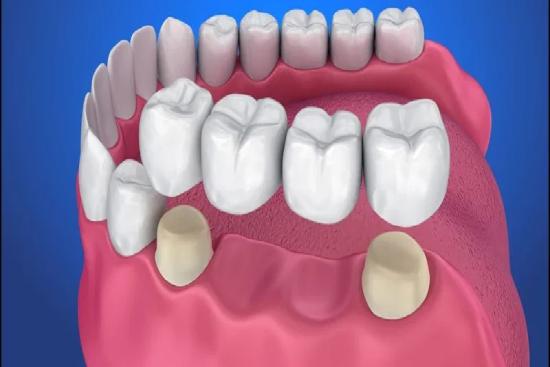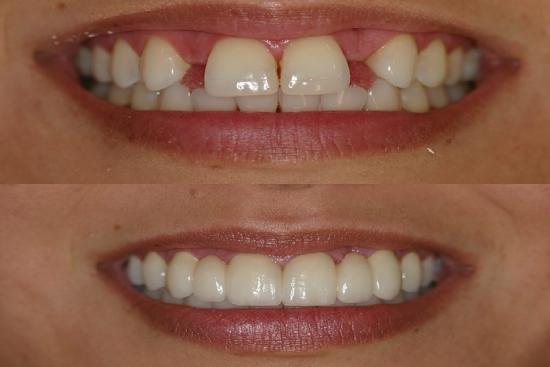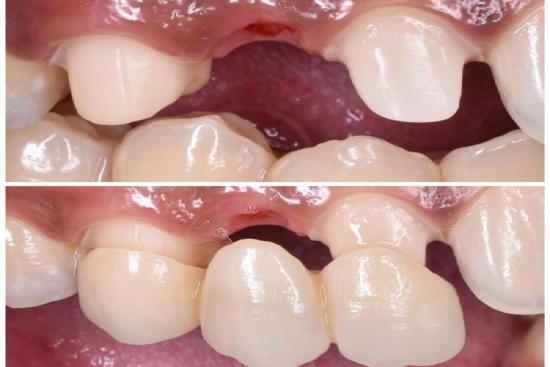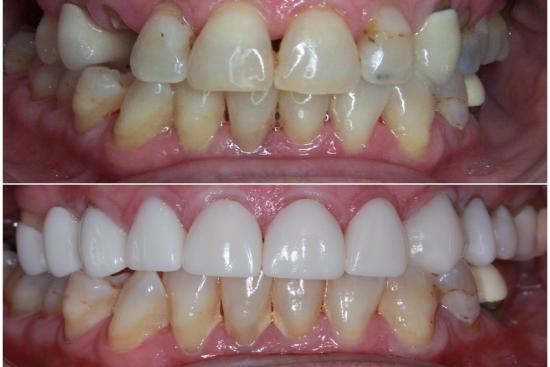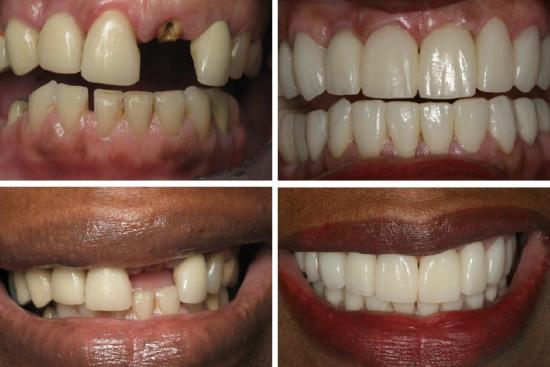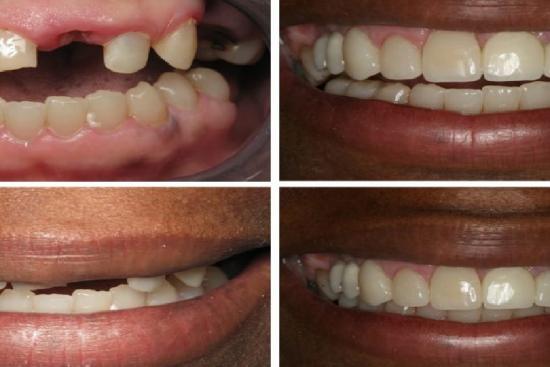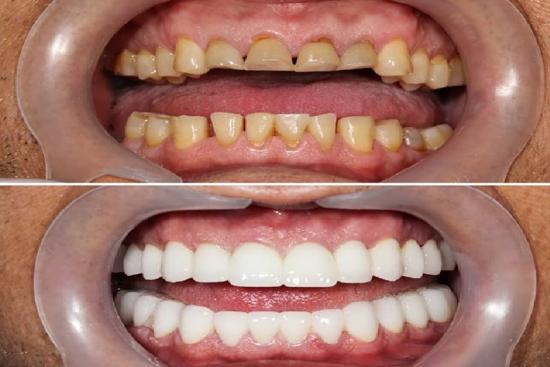A dental bridge is a fixed prosthesis used in dentistry to replace one or more missing teeth. Designed to restore both smile aesthetics and chewing function, it prevents the shifting of adjacent teeth and helps maintain the integrity of the oral structure.
Attached to prepared natural teeth or dental implants, dental bridges fill the gap left by a missing tooth and are a reliable alternative to single implants. High-quality materials and state-of-the-art techniques ensure a natural, long-lasting result.
- People missing one or more teeth.
- People who would need to replace a missing tooth but could not have implant surgery.
- People with difficulty chewing due to lack of teeth.
- Pain.
- Inflammation of the gum.
- Dental implant.
- Dental veneer.
- Hollywood Smile.
- The installation of the bridge in Istanbul lasts between 30 minutes and 1 hour.
- Back to daily activities 3 to 7 days after placement of the bridge.
- The average longevity of a bridge is around 15 years.
- 95%.
Dental bridge cost in Turkey
The price of a dental bridge depends on several factors, including the number of teeth to be replaced, the type of bridge chosen, and any preliminary examinations. In Turkey, the cost of a dental bridge generally varies between €200 and €400per tooth, but this estimate can vary depending on the specific needs of each patient.
At Turquie Santé we negotiate the best prices and conditions for our patients for all dental treatments in Turkey. For an accurate, personalized estimate of the cost of your dental bridge, you can request a free quote from our dental specialists today.
Best Clinics with Verified Reviews

- Renowned specialty dental clinic
- 12 examination rooms
- 26 specialized dentists on an area of 2,000 m2

- Specialised dental clinics in Istanbul
- 40 examination rooms
- 60 dentists in total area of 4.000 m2
Dental bridge: Choosing the material
A dental bridge is a fixed prosthetic solution designed to replace one or more missing teeth. It consists of pontics (artificial teeth) securely attached to adjacent natural teeth or dental implants and is an effective alternative to removable dentures.
This treatment is designed for patients who have lost a tooth due to extraction, trauma, or congenital malformation (dental agenesis). It restores the chewing function and the aesthetics of the smile and prevents the displacement of the adjacent teeth.
The choice of material is an essential criterion that influences the durability, strength, and aesthetic appearance of the dental bridge. There are three main types:
- Metal bridge: Made of metal alloy, it offers great strength and is often used for posterior teeth. However, its unattractive appearance limits its use to inconspicuous areas.
- Metal-ceramic bridge: This bridge combines strength and aesthetics, blending harmoniously with the natural dentition. It consists of a metal structure covered with ceramic.
- 100% ceramic bridge: Made entirely of ceramics, this bridge offers optimal aesthetics, close to natural teeth, and is particularly suitable for anterior teeth.
The choice of material depends on the patient's needs, the location of the prosthesis, and the dentist's recommendations. A personalized evaluation allows you to choose the best option for a smile that's both functional and aesthetically pleasing.
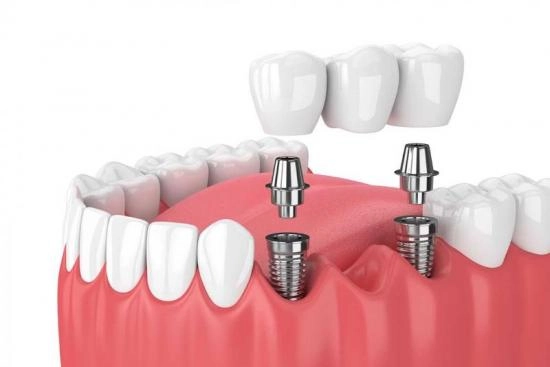
Types of dental bridges
There are several types of dental bridges available in our clinics in Turkey. These dental bridges are classified according to the technique used to secure them:
Dental bridge type | Characteristics |
Traditional (or fixed) dental bridge | This type of bridge is supported by the natural teeth adjacent to the missing tooth. The adjacent teeth are trimmed to receive the crowns that support the bridge. |
Removable dental bridge | Unlike fixed bridges, which are cemented into place, a removable dental bridge can be removed and replaced by the patient. This type of bridge usually consists of a metal or pink resin base that rests on the gums and artificial teeth attached to the base to replace missing teeth. |
Cantilever dental bridge | This bridge is similar to a traditional bridge but is attached to a single adjacent natural tooth instead of two. This can be useful when only one natural tooth is available for support. |
Maryland dental bridge | Also known as a wing bridge, this type of bridge is attached to the back of adjacent teeth using metal or resin wings, rather than being supported by crowns. |
Implant-supported bridge | This type of bridge is attached to dental implants that are inserted into the jawbone, rather than being supported by natural teeth. It provides a more stable solution and can be used when several teeth are missing in a row. |
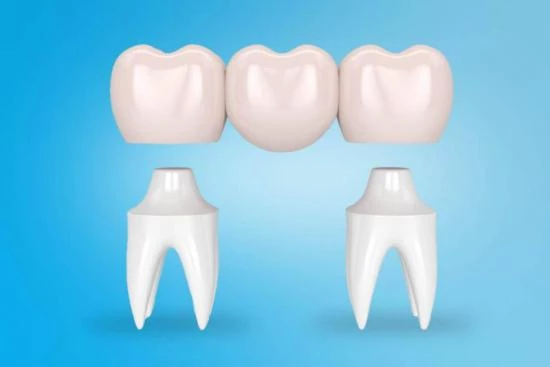
Diagnosis and personalized planning
The installation of a dental bridge begins with a consultation with the dentist, during which a thorough examination is performed. This first step is essential to assess the condition of the teeth and surrounding tissues.
Using panoramic x-rays and other imaging tests, the dentist analyzes the oral structure to detect any complications and ensure appropriate treatment. Based on these observations, the dentist selects the most appropriate type of dental bridge (traditional, cantilever or Maryland) to ensure a perfect fit and optimal function.
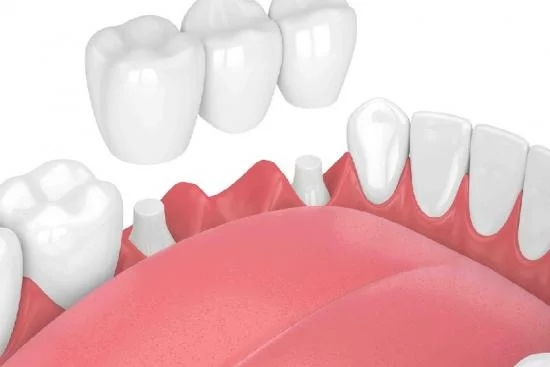
Dental bridge installation process in Turkey
The dental bridge installation process in Turkey includes the following steps:
Preparation of abutment teeth
Adjacent teeth, called abutment teeth, are prepared to receive the dental bridge. A thin layer of enamel is removed to make room for the crowns that will support the structure. This step is done with great precision to ensure a perfect fit and optimal strength.
High-precision impressions
A detailed impression of the area is taken to design a bridge that perfectly matches the patient's dentition. Two methods are used:
Traditional impression, made with a special material to capture every detail of the tooth structure.
Digital impression, taken with an intra-oral scanner, for maximum precision and significant time savings.
Bridge design and fabrication
The impression is then sent to the dental laboratory where experts fabricate the dental bridge using high quality materials such as ceramic or zirconium. Advanced technologies such as Computer Aided Design and Manufacturing (CAD/CAM) and 3D printing speed up the process and ensure a precise fit and a natural aesthetic appearance.
Bridge fitting and adjustments
An initial try-in is performed to test the comfort, color, and alignment of the dental bridge. If necessary, adjustments are made to ensure perfect integration with the natural teeth. A temporary denture may be placed to protect the teeth until the final fitting.
Final cementation and bite check
Once the adjustments have been validated, the dental bridge is permanently cemented in place with high-strength dental cement. The dentist will then check the occlusion (how the teeth align when you chew) to make sure there is no discomfort or excessive pressure on adjacent teeth.
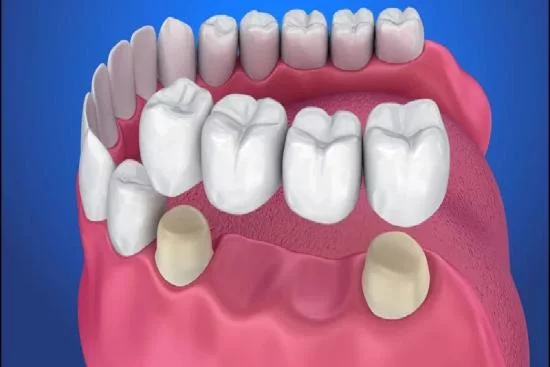
Benefits of dental bridges
Dental bridges offer numerous functional and aesthetic benefits that contribute significantly to oral health. They guarantee:
- A natural, harmonious aesthetic result: Dental bridges are designed to perfectly match the color and shape of natural teeth, providing a natural visual result.
- Restoration of chewing and speech functions: by filling the space left by missing teeth, dental bridges facilitate chewing and speech.
- Prevent tooth misalignment: Prevents adjacent teeth from shifting and maintains the natural alignment of teeth.
- Fast, long-lasting alternative: Dental bridges do not require surgery and can last for many years with proper care.
Disadvantages to consider
Despite their many advantages, dental bridges also have some disadvantages that should be considered before deciding to proceed with this prosthetic solution:
- Modification of abutment teeth: To ensure an optimal fit, dental bridges rest on abutment teeth, which must be prepared. This process involves grinding away the enamel, which can lead to increased sensitivity and reduced natural strength.
- Risk of tooth sensitivity: After a bridge is placed, it's common to experience temporary sensitivity to hot and cold foods. If this discomfort persists, it may indicate a problem with the fit or alteration of the abutment teeth, requiring corrective action.
- Susceptibility to decay and plaque buildup: Dental bridges can create areas that are difficult to reach when brushing, which encourages the buildup of plaque and bacteria. Over time, this can lead to decay on the abutment teeth, requiring additional dental care and compromising the stability of the bridge.
- Limited lifespan: Although dental bridges are designed to last many years, their lifespan is generally shorter than that of dental implants. Over time, material wear and changes in the patient's dental structure may require replacement, resulting in additional costs.
- Higher cost for implant-supported bridges: Although more stable and durable, implant-supported bridges require surgery and are a larger investment.
Share this page
Dental bridge: a fixed prosthesis intended to replace one or more missing teeth (dental agenesis).
The lifespan of a generic dental bridge varies between 5 and 15 years. If the wearer takes care of their oral hygiene, the chances of the dental bridge lasting at least ten years are quite high.
The bridge is a dental prosthesis made up of 3 crowns or more (false teeth) which makes it possible to fill the space left by a lost tooth. The 2 teeth next to the missing one are filed down and made smaller so that they act as pillars of the bridge. The prosthesis will then be bonded to these two teeth.
Dental bridges, which are single fixed prostheses, are frequently used to fill the void left by one or more lost teeth. It is one of the most popular dental surgery operations and ensures an excellent result so that you cannot tell the difference from the surrounding natural teeth.
